
Table of Contents for Journal of Cuneiform Studies 71 (2019)
You can receive JCS (and other ASOR publications) through an ASOR Membership. Please e-mail the Membership office if you have any questions.
Pp. 3–9: “A Double Date Formula of the Old Akkadian King Manishtusu,” by Nashat Alkhafaji
This article provides a preliminary edition of an unprovenienced Old Akkadian tablet 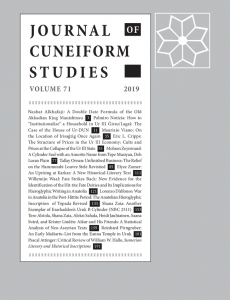
ASOR Members with online access: navigate to the token link email sent to you before attempting to read this article. Once you have activated your member token, click here to access the above article on The University of Chicago Press Journals’ website.
Pp. 11–34: “How to “Institutionalize” a Household in Ur III Ĝirsu/Lagaš: The Case of the House of Ur-DUN,” by Palmiro Notizia
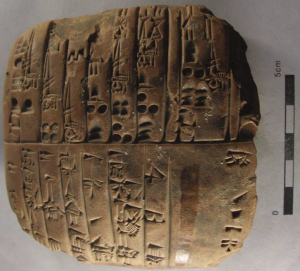
ASOR Members with online access: navigate to the token link email sent to you before attempting to read this article. Once you have activated your member token, click here to access the above article on The University of Chicago Press Journals’ website.
Pp. 35–52: “On the Location of Irisaĝrig Once Again,” by Maurizio Viano
The recovery of a few royal inscriptions at Tūlūl al-Baqarat (Iraq) by the 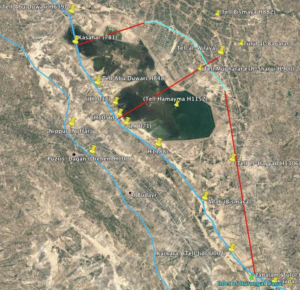
ASOR Members with online access: navigate to the token link email sent to you before attempting to read this article. Once you have activated your member token, click here to access the above article on The University of Chicago Press Journals’ website.
Pp. 53-76: “The Structure of Prices in the Ur III Economy: Cults and Prices at the Collapse of the Ur III State,” by Eric L. Cripps
The production of a barley surplus by the Ur III economy was vital for the operation of its commodity money system. The standardizing bi-monetary equivalence of a gur measure of barley and a shekel of silver stabilized commodity prices for the thirty-five years before the reign of Ibbi-Suen. In Ibbi-Suen’s early years, the collapse of the barley supply induced an excessive devaluation of the barley to silver ratio leading to a near hyperinflation in the prices of staple commodities and bovids required for cult and other purposes. This article analyzes the inflation in prices of animals and staples correlated with the precipitous fall in the barley to silver price ratio. Data is primarily from the Ur texts dated to the seventh year of Ibbi-Suen’s reign concerned with the purchase and delivery to state institutions of animals. Importantly, an analysis of these events demonstrated the central function of a barley surplus in the Ur III monetary system.
ASOR Members with online access: navigate to the token link email sent to you before attempting to read this article. Once you have activated your member token, click here to access the above article on The University of Chicago Press Journals’ website.
Pp. 77-83: “A Cylinder Seal with an Amorite Name from Tepe Musiyan, Deh Luran Plain,” by Mohsen Zeynivand
The archeology of the Deh Luran plain was documented by the work of Frank Hole and his associates in 1960s and 1970s. 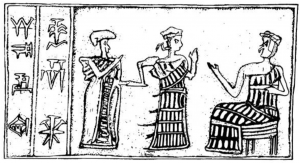
ASOR Members with online access: navigate to the token link email sent to you before attempting to read this article. Once you have activated your member token, click here to access the above article on The University of Chicago Press Journals’ website.
Pp. 85-109: “Unfinished Business: The Relief on the Hammurabi Louvre Stele Revisited,” by Tallay Ornan
A reexamination of the relief on the Hammurabi’s “Law Code” stele reveals that the type of beard worn by Hammurabi 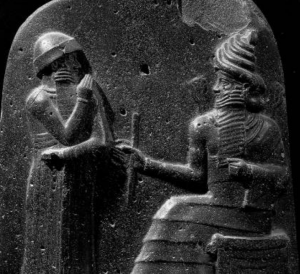
ASOR Members with online access: navigate to the token link email sent to you before attempting to read this article. Once you have activated your member token, click here to access the above article on The University of Chicago Press Journals’ website.
Pp. 111-120: “An Uprising at Karkar: A New Historical-Literary Text,” by Elyze Zomer
This paper offers a new edition of the Middle Babylonian bilingual fragment VS 17, 43 (VAT 1514) 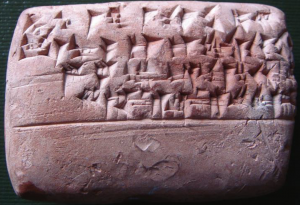
ASOR Members with online access: navigate to the token link email sent to you before attempting to read this article. Once you have activated your member token, click here to access the above article on The University of Chicago Press Journals’ website.
Pp. 121-132: “Fate Strikes Back: New Evidence for the Identification of the Hittite Fate Deities and Its Implications for Hieroglyphic Writing in Anatolia,” by Willemijn Waal
In 2014, I proposed that the GUL-šeš deities may have to be identified with the Kuwa(n)šeš deities, a suggestion that has met with severe criticisms. Since now new evidence has come to light that confirms the equation of these deities, it seems opportune to re-address this debate, which also has important consequences for the use of hieroglyphic writing in Anatolia. In this article, I will present the new evidence, counter the critiques that have been given, and address the wider implications.
ASOR Members with online access: navigate to the token link email sent to you before attempting to read this article. Once you have activated your member token, click here to access the above article on The University of Chicago Press Journals’ website.
Pp. 133-152: “War in Anatolia in the Post-Hittite Period: The Anatolian Hieroglyphic Inscription of Topada Revised,” by Lorenzo d’Alfonso
This article presents a new transcription and translation of the TOPADA inscription. 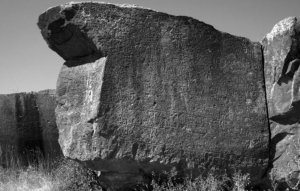
ASOR Members with online access: navigate to the token link email sent to you before attempting to read this article. Once you have activated your member token, click here to access the above article on The University of Chicago Press Journals’ website.
Pp. 153-157: “Another Exemplar of Esarhaddon’s Uruk B Cylinder (NBC 2511),” by Shana Zaia
The Yale Babylonian Collection contains a partial cylinder, NBC 2511, that preserves a hitherto unknown example of Esarhaddon’s Uruk B inscription. While this exemplar does not deviate in translation from those already published in RINAP 4, there are some orthographic variations. This article presents an edition of NBC 2511 with some comments regarding its differences from the published exemplars and its parallels with other Esarhaddon Uruk cylinders.
ASOR Members with online access: navigate to the token link email sent to you before attempting to read this article. Once you have activated your member token, click here to access the above article on The University of Chicago Press Journals’ website.
Pp. 159-180: “Aššur and His Friends: A Statistical Analysis of Neo-Assyrian Texts,” by Tero Alstola, Shana Zaia, Aleksi Sahala, Heidi Jauhiainen, Saana Svärd, and Krister Lindén
Large digital datasets of cuneiform sources lend themselves to computational analysis that can complement and improve upon traditional philological work. The present article applies social network analysis to an electronic corpus of 1,532 texts to study the god Aššur and his position in divine networks in the Neo-Assyrian period. Our results show that the performance of social network analysis can be improved by using a small window size and calculating tie strengths with pointwise mutual information. This allows us to study the co-occurrences of gods in semantic contexts. From a network perspective, Aššur is not a very central god in our corpus despite his importance in Assyrian royal theology, but he rather joins the existing networks of gods without altering them.
ASOR Members with online access: navigate to the token link email sent to you before attempting to read this article. Once you have activated your member token, click here to access the above article on The University of Chicago Press Journals’ website.
Pp. 181–190: “An Early Maššartu-List from the Eanna Temple in Uruk,” by Reinhard Pirngruber
This article presents editions of two maššartu lists from the Eanna-temple in Uruk now housed 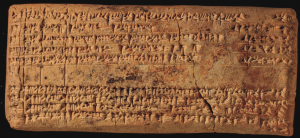
ASOR Members with online access: navigate to the token link email sent to you before attempting to read this article. Once you have activated your member token, click here to access the above article on The University of Chicago Press Journals’ website.
Pp. 191-207: “Critical Review,” by Pascal Attinger
ASOR Members with online access: navigate to the token link email sent to you before attempting to read this article. Once you have activated your member token, click here to access the above article on The University of Chicago Press Journals’ website.
ASOR Members with online access: navigate to the token link email sent to you before attempting to read this issue. Once you have activated your member token, click here to access the the entire issue, including book reviews, on The University of Chicago Press Journals’ website.